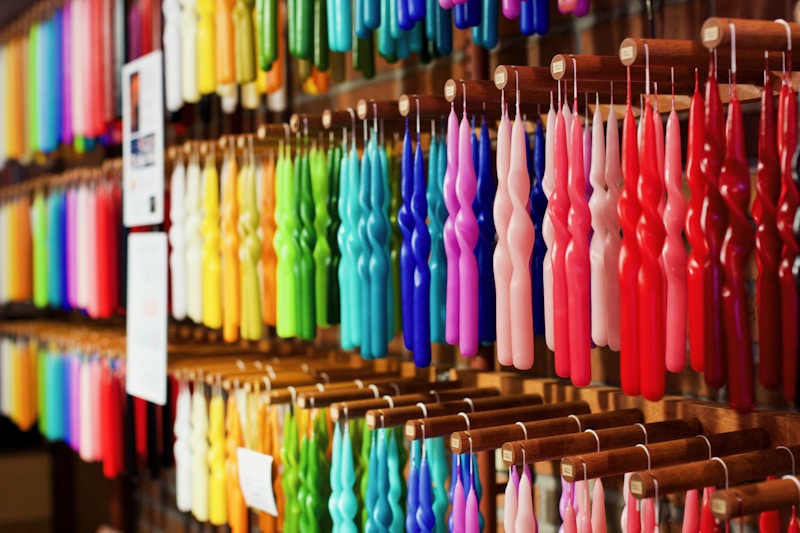Visual Merchandising Techniques to Enhance Brand Image
Visual Merchandising Techniques to Enhance Brand Image
Understanding Visual Merchandising: Strategies for Success
In the competitive world of retail, businesses are constantly looking for innovative ways to attract customers and enhance their brand image. One of the most effective methods for achieving this is through visual merchandising techniques. This article will delve into various strategies that can enhance a brand’s image and ultimately drive sales.
What is Visual Merchandising?
Visual merchandising refers to the practice of designing and displaying retail space to enhance the shopper's experience and promote products. This technique plays a vital role in communicating a brand's identity, evoking emotions, and influencing purchasing decisions. By utilizing various visual merchandising strategies, retailers can significantly improve their brand image and increase customer loyalty.
Key Visual Merchandising Techniques
Below are some essential visual merchandising techniques that can help enhance a brand's image:
| Technique | Description | Example |
| Color Psychology | Utilizing colors to evoke specific emotions and attitudes. | A clothing store might use warm colors to create a cozy atmosphere. |
| Lighting | Strategically using lighting to highlight products and create ambiance. | Jewelry stores often use soft lighting to enhance the sparkle of their products. |
| Window Displays | Creating eye-catching displays to attract foot traffic. | High-end brands often change their window displays regularly to reflect seasonal themes. |
| Signage | Using clear and engaging signs to guide customers. | Informative signs can direct customers to special promotions or new arrivals. |
| Product Placement | Strategically placing products to encourage purchases. | Placing popular items at eye level can increase sales opportunities. |
Color Psychology in Visual Merchandising
Colors play a crucial role in how consumers perceive a brand. Understanding color psychology can greatly enhance visual merchandising efforts. For example, the color blue is often associated with trust and professionalism, making it a popular choice for banking services. On the other hand, red can evoke excitement and urgency, which is why it’s frequently used in clearance sales and promotions. By choosing the right colors for their displays, brands can reinforce their identity and create an emotional connection with their customers.

The Importance of Lighting
Lighting is not just a practical element of store design; it has the power to create mood and focus attention. Effective lighting can highlight specific products, increase visibility, and establish an inviting atmosphere. Ambient lighting sets the overall mood, while accent lighting draws attention to key items. Retailers should experiment with different lighting techniques to find the right balance that enhances their brand's image and improves the shopping experience.
Creating Engaging Window Displays
Window displays are the first point of contact between a consumer and a brand. An attractive window display can pull customers into a store and encourage them to browse. Successful window displays not only showcase products but also tell a story that aligns with the brand's identity. By using creative themes, seasonal decorations, and eye-catching visuals, retailers can effectively draw in foot traffic and enhance their brand image.
Effective Signage and Branding
Signage is essential in guiding customers within a store. Clear, attractive signs can help customers find what they’re looking for quickly, thus improving their overall shopping experience. Effective signage should include information about promotions, seasonal sales, and upcoming events, while also maintaining the brand’s visual style. Well-designed signs can reinforce brand identity and serve as a marketing tool that enhances a brand's image.
Strategic Product Placement
Placement of products can significantly influence buying behavior. For example, items placed at eye level are more likely to catch attention and trigger impulse purchases. Using cross-merchandising techniques by placing complementary products together can also encourage customers to purchase more. Brands should analyze customer flow and adjust product displays to maximize exposure and sales potential.
Innovative Techniques to Enhance Brand Image
In addition to traditional visual merchandising strategies, here are some innovative techniques that brands can implement:
Technology Integration
Incorporating technology into visual merchandising can provide an interactive and engaging experience. For instance, digital displays can showcase product videos, customer testimonials, or even real-time promotions. Augmented reality apps allow customers to visualize products in their own space before purchasing, enhancing confidence in their decision-making.
Seasonal Themes and Promotions
Changing displays to align with seasons or holidays can keep a brand fresh and relevant. Seasonal themes allow customers to connect emotionally with the brand. Special promotions during holidays or events can attract significant foot traffic and enhance brand recall.
Measuring the Impact of Visual Merchandising
To understand the effectiveness of visual merchandising strategies, retailers should track sales data and customer engagement levels. Metrics like foot traffic, conversion rates, and average transaction values can provide insight into what works and what needs improvement. Customer feedback can also guide future visual merchandising decisions, ensuring that brands remain responsive to consumer needs.
Conclusion: Enhancing Brand Image through Visual Merchandising
Visual merchandising is a powerful tool that can significantly enhance a brand's image and influence consumer behavior. By employing effective techniques—such as color psychology, strategic lighting, compelling window displays, clear signage, and innovative technology—retailers can create a shopping environment that resonates with customers. Regular evaluation and adaptation of visual merchandising strategies can ensure a brand remains appealing and relevant in a constantly evolving market.
In summary, retailers should keep several key points in mind when implementing these techniques. Always stay true to your brand identity, understand your target audience, and be willing to evolve based on consumer feedback. By doing so, you can successfully leverage visual merchandising to not only enhance your brand image but also drive sales and foster customer loyalty.
